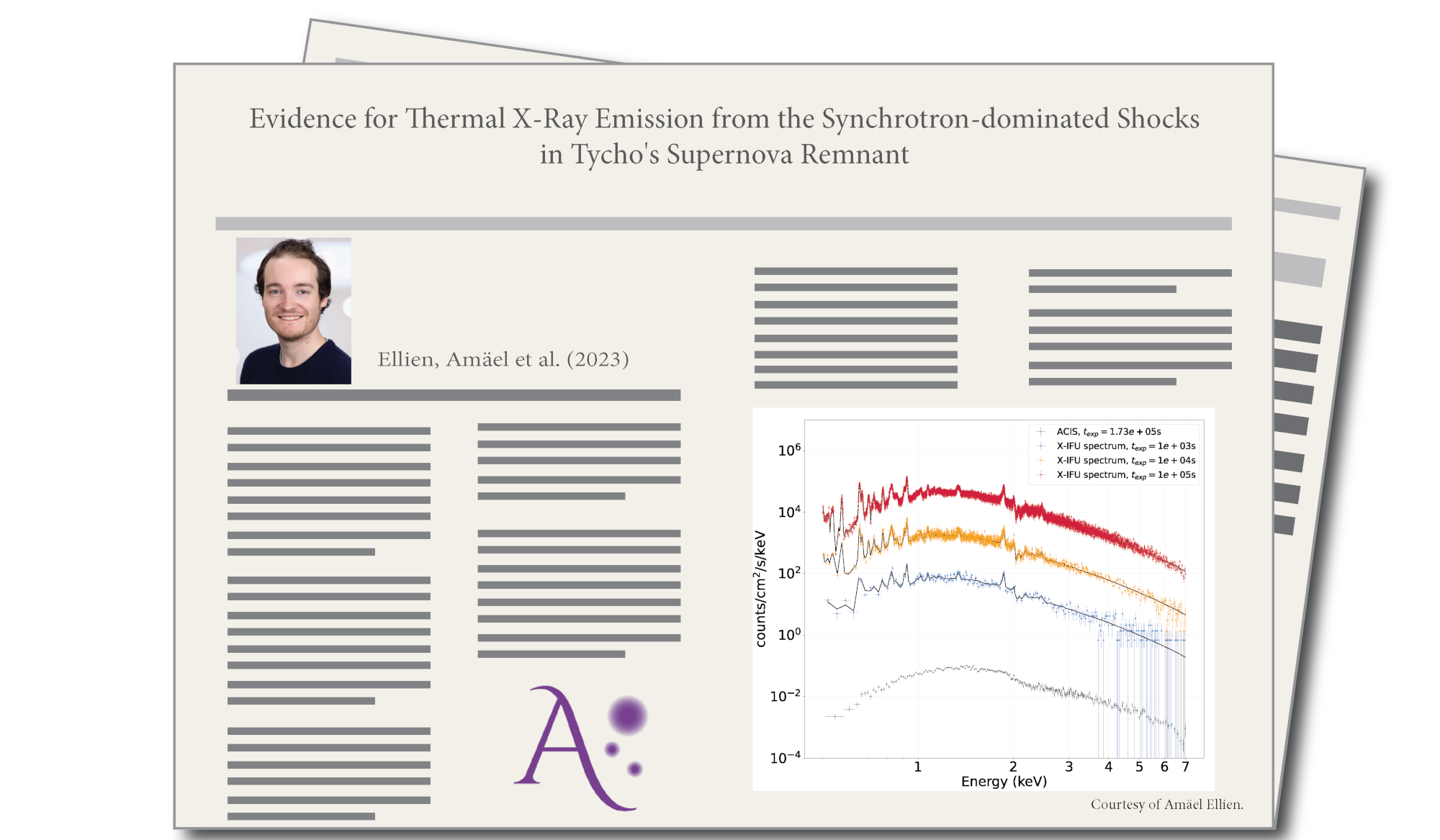
Evidence for Thermal X-Ray Emission from the Synchrotron-dominated Shocks in Tycho's Supernova Remnant

Simulated X-IFU spectra with different exposure time values are displayed alongside the corresponding ACIS shock spectrum (black crosses). The normalization of the ACIS spectrum is the original, but the X-IFU spectra have been renormalized for display purposes.
By Amaël Ellien
Supernovae remnants are the leftovers of a star exploding into a supernovae, of which properties can tracked for thousands of years through their X-ray emission. In the case of young SNRs, the original blast wave is still expanding through the interstellar medium (ISM) at high velocity, shocking it and accelerating particles to TeV regime. In this paper, we use Chandra archival data to perform an extended statistical analysis of Tycho's SNR rim, which has the particularity of displaying strong features of particle acceleration in the vicinity of the shock front, without clear signs of the expected signature from the shocked ambient medium. We use Bayesian inference to test and compare multiple plasma emission models and demonstrate the presence in the shock spectra of a faint thermal signature associated with shocked ISM.
However the poor spectral resolution of Chandra at low energy (<0.5-1 keV) prevents the detection of some of the crucial shocked ISM emission lines. Using our best Bayesian-selected model as a template, we produce simulated X-ray Integral Field Unit spectra and show that its remarkable spectral resolution will be excellent for resolving these emission lines and even allow Doppler broadening measurements. These are exciting prospects as they will give access to the electron-to-ion temperature ratio, a critical measurement to understand and constrain the complex physics behind SNR shocks.

